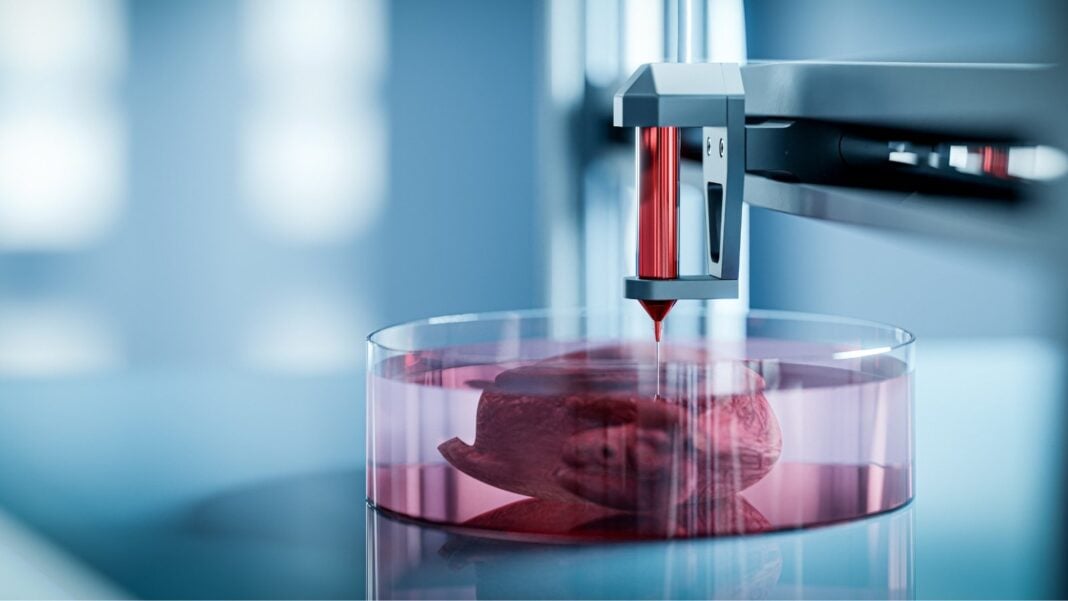Imagine an era in which organ transplants are possible and do not involve long waiting lists or any risk of rejection. Bioprinting has gradually made this dream come true. It is an amazing and innovative 3D printing, using living cells to produce tissues and organs. Challenges still remain in its path, but the potential is tremendous. This article examines the bioprinting process, applications, challenges, and the future in transplantation.
How Bioprinting Works?
Practically speaking, bioprinting is substantially similar to regular 3D printing; however, instead of ink or thermoplastics, bioinks are used, which are gel-like formulations usually consisting of living cells layered very meticulously to form tissue structures resembling real-life human organs. It would probably comprise the following steps:
- Pre-Bioprinting: In this phase, scientists and physicians are going to develop a digital model of the organ to be printed. High-tech imaging methods such as MRI, CT scans, and so on can be used. This is like the blueprint.
- Bioprinting: The specialized bioprinter oversees the controlled deposition of bioink layers, shaping the organ or tissue’s design.
- After-printing: The printed tissue is transferred to a bioreactor, where it is nurtured to grow, mature, and acquire the needed biological functions.
Practical Applications of Bioprinting
Although printing fully functioning human organs falls within the realm of research, bioprinting has already been of great value in the medical field. Here is how:
- Organ Transplantation: Eventually, bioprinting harbors the dream of designing a fully functional organ for transplantation. While there is some considerable way to go, researchers have been able to print miniature versions of livers, kidneys, and hearts that show early signs of functioning like their real counterparts. If scientists are able to scale the process up, organ transplant waitlists may soon be a thing of the past. (Frontiers in Mechanical Engineering)
- Drug Testing Without Animal Experiments: Drug testing is an area where animal experimentation has always been an imperfect science; what turns out to be useful in mice may not be in humans. Bioprinting thus offers scientists a means of preparing human-like tissues for more accurate and ethical drug tests. This will expedite the drug development process and ensure human safety. (National Library of Medicine)
- Healing Wounds and Burns: The alternative to healing wounds and burns that could provide salvation to the burn victims and people suffering from chronic wounds alike is bioprinted skin. Rather than waiting for skin grafts to be available from donors, doctors could use printed patient-specific skin patches from the patient’s own cells, thereby minimizing the risk of rejection and speeding up healing.. (National Institutes of Health)
- Bone and Cartilage Restoration: Bioprinting is not only for soft tissue; it is equally making its mark in orthopedics. Scientists are developing printed bone and cartilage grafts that may expedite recovery for patients with severe injuries, arthritis, or degenerative diseases, with fewer complications.. (Royal Society of Chemistry)
Challenges to Be Overcome
While the prospects of bioprinting do stir excitement, it comes with its list of challenges. Some of the major impediments that researchers are trying to overcome are as follows:
- Blood vessel formation: One main difficulty is getting bioprinted tissues vascularized, meaning they have functional blood vessels. Without an appropriate supply of blood, organs cannot obtain the oxygen and nutrients they require for existence. Scientists have a work in progress that includes creating blood vessels within the printed tissue. (MDPI Bioengineering)
- Keeping Cells Alive: There is a significant difference between printing living cells and ensuring their continuous viability and functionality after being printed. Scientists must ensure that the printed cells can further grow, undergo development, and perform their assigned functions.(Military Medical Research Journal)
- Ethics and Regulations: Bioprints utilize human cells for its processes and thus have ethical and regulatory concerns. Governments and health organizations might well establish strict guidelines for these settings in order to ensure safety and ethical compliance.(MDPI Bioengineering)
- Making It Affordable and Scalable: On account of highly costly procedures and highly specialized equipment, bioprinting is not widely accessible. For bioprinting to become accessible and cost-effective, further development is awaited. (Royal Society of Chemistry)
What Does the Future Hold for Bioprinting?
With punchy development in this front, one of the brightest prospects prevails for bioprinting, With rapid advancements being made by scientists in the following.
- Full-Scale Printing of Human Organs – Scientists seem to be coming closer in printing bigger organs like kidneys, livers, or hearts that could find their way into transplantation on human patients. (Frontiers in Mechanical Engineering)
- With this bioprinting technique, bioprinted organs and tissues could be produced for the individual patient, taking into account the patient’s unique genetic composition. This would most likely reduce the chances of rejection. (National Library of Medicine)
- Identified as AI and Robotics in Bioprinting, it is the AI that enhances the accuracy of bioprinting whereas robotic automation imparts the speed and efficiency to the actual process. . (National Institutes of Health)
Conclusion
Arguably, bioprinting is a fascinating and modern medical advancement with its capacity to save millions of lives. While quite a few hurdles remain, the progress is nothing short of astonishing: from printing skin for burn victims to organs that can eliminate transplant waitlists, this technology will turn health care upside down. If things keep progressing this way, we will soon witness bioprinting shift from research labs into hospitals, resuming the countdown to a day when anyone dying from waiting for a transplant will be a thing of the past.
References
- Frontiers in Mechanical Engineering. (2022). Advances in bioprinting for organ transplantation. https://www.frontiersin.org/journals/mechanical-engineering/articles/10.3389/fmech.2020.589171/full
- MDPI Bioengineering. (2022). Challenges in bioprinting vascularized tissues. https://www.mdpi.com/2306-5354/10/5/606
- Military Medical Research Journal. (2022). Cellular viability in bioprinting applications. https://mmrjournal.biomedcentral.com/articles/10.1186/s40779-022-00429-5
- National Institutes of Health. (2020). AI and robotics in bioprinting. https://pmc.ncbi.nlm.nih.gov/articles/PMC9830995/
- National Library of Medicine. (2021). Ethical considerations in bioprinting. https://pmc.ncbi.nlm.nih.gov/articles/PMC8465948/
- Royal Society of Chemistry. (2021). Bone and cartilage restoration through bioprinting. https://pubs.rsc.org/en/content/articlelanding/2022/bm/d2bm00709f












